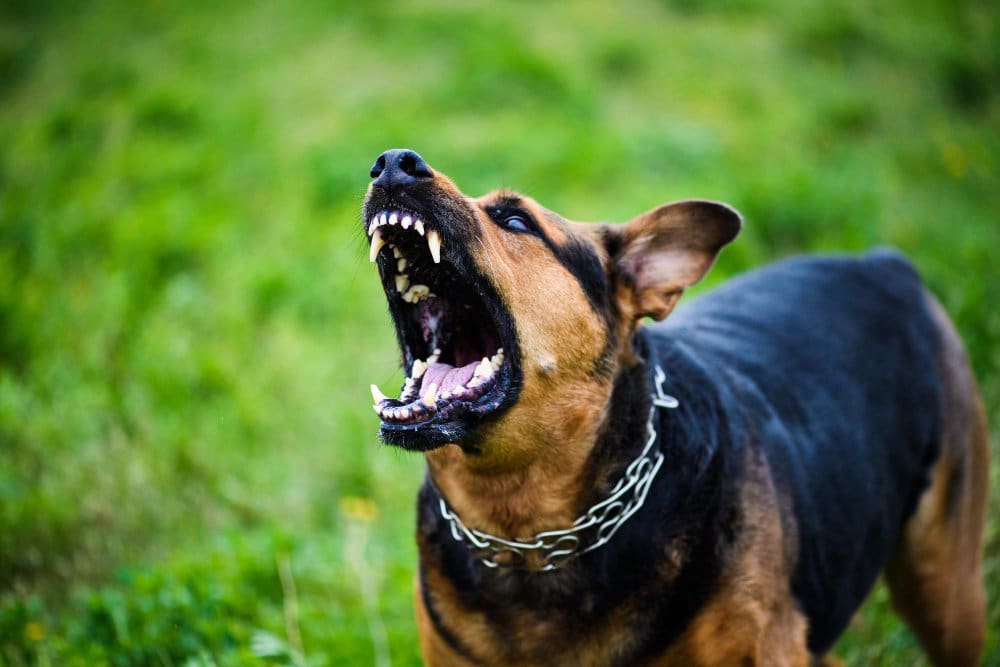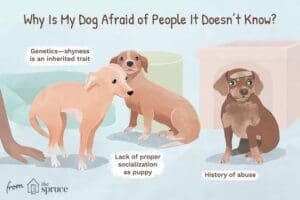Are you struggling with your furry friend’s separation anxiety? Don’t worry, you’re not alone. Separation anxiety in dogs can be a distressing experience for both pet owners and their beloved companions. In this informative article, we will explore the common causes of separation anxiety, identify the telltale symptoms to watch out for, and provide proven solutions to help alleviate your dog’s anxiety and create a harmonious environment for you both. So, let’s embark on this journey to better understand and support our four-legged friends through their separation anxiety challenges.
Causes
Fear of abandonment
Many dogs experience separation anxiety due to a deep-rooted fear of being alone and abandoned. This fear can stem from previous traumatic experiences or a lack of socialization early in their lives. Dogs who have been rehomed or abandoned in the past may be more prone to developing separation anxiety.
Change in routine
Dogs are creatures of habit and thrive on a consistent routine. Any sudden or drastic change in their daily routine can trigger anxiety in dogs. This could include changes in their feeding schedule, exercise routine, or even a change in the household’s daily activities. Dogs seek familiarity and security, and disruptions to their routine can cause them to feel anxious and stressed.
Traumatic experiences
Dogs who have experienced traumatic events, such as being abandoned, mistreated, or left alone for extended periods, are more likely to develop separation anxiety. These traumatic experiences can create a fear response in dogs, leading them to associate being alone with negative emotions and distress.
Lack of socialization
Proper socialization is crucial for dogs to feel comfortable and confident in various situations, including being alone. Dogs who haven’t had sufficient exposure to different environments, people, and other animals may be more prone to developing separation anxiety. Socialization helps dogs build resilience and adaptability, making them more secure when left alone.
Genetic predisposition
Research suggests that some dogs may have a genetic predisposition to developing separation anxiety. Certain breeds, such as Labrador Retrievers, German Shepherds, and Border Collies, may be more prone to anxiety-related behaviors. However, it’s essential to note that genetics alone do not determine whether a dog will have separation anxiety. A combination of genetic factors and environmental triggers contribute to its development.
Symptoms
Excessive barking or howling
One common symptom of separation anxiety in dogs is excessive barking or howling when left alone. Dogs may vocalize their distress and attempt to communicate their anxiety to their owners. This behavior often occurs shortly after the owner leaves and can continue throughout the duration of their absence.
Destructive behavior
Dogs with separation anxiety often engage in destructive behaviors, such as chewing furniture, scratching doors, or tearing apart household items. This destructive behavior serves as a way for the dog to relieve their anxiety and cope with their stress. It is essential to provide appropriate outlets for their chewing and destructive tendencies, such as providing them with durable chew toys.
Pacing or restlessness
Restlessness and excessive pacing are common signs of anxiety in dogs. When left alone, dogs with separation anxiety may continuously move around the house, unable to settle down. This behavior is a result of their heightened anxiety and a desperate attempt to find comfort.
Urinating or defecating indoors
Another distressing symptom of separation anxiety is inappropriate elimination indoors. Dogs may urinate or defecate inside the house, even if they are otherwise well-trained. This behavior is not due to a lack of house training but stems from their anxiety and the stress associated with being left alone.
Escaping attempts
Dogs with separation anxiety may try to escape from their confinement area or the house in desperate attempts to find their owners. This can result in damage to doors, windows, or destructive behavior while attempting to flee. Escaping attempts can pose a significant risk to the dog’s safety, as they may injure themselves in the process.
Excessive drooling or panting
Anxious dogs often exhibit excessive drooling or panting when faced with separation anxiety. The stress and fear associated with being alone can cause physiological changes in their body, leading to increased saliva production and panting. It’s crucial to monitor their drooling and panting levels as severe cases may lead to dehydration and other health complications.
Loss of appetite
A decrease in appetite or refusal to eat when left alone can be a clear symptom of separation anxiety in dogs. The anxiety they experience can suppress their appetite, making it challenging for them to eat or enjoy food. It’s important to address this symptom to ensure their nutritional needs are met even when they are feeling anxious.
Aggression or hyperactivity
Some dogs may exhibit aggressive or hyperactive behavior when faced with separation anxiety. This can manifest as excessive jumping, biting, or even destructive behavior towards themselves or their surroundings. It’s essential to address these behavioral changes and seek professional guidance to ensure the safety of both the dog and those around them.
Diagnosis
Observation of behavior
Diagnosing separation anxiety in dogs begins with carefully observing their behavior when left alone. Documenting any signs of distress, destructive behavior, or other anxiety-related symptoms can help determine if separation anxiety is the underlying cause.
Veterinary examination
Before attributing the dog’s behavior solely to separation anxiety, it is crucial to rule out any underlying medical conditions that may contribute to their anxiety. A thorough veterinary examination, including a physical examination and any necessary diagnostic tests, can help identify any medical causes or conditions that may be affecting the dog’s behavior.
Ruling out medical causes
Once medical causes have been ruled out, the veterinarian can provide a more accurate diagnosis of separation anxiety. This involves assessing the dog’s behavior patterns when left alone and gathering information from the owner regarding the frequency and severity of the anxiety-related symptoms.
Consultation with a professional behaviorist
In cases where dogs exhibit severe separation anxiety or when previous attempts to address the issue have been ineffective, consultation with a professional behaviorist is recommended. Behaviorists have the expertise and experience to develop tailored behavior modification plans to help dogs overcome separation anxiety effectively.
Prevention
Early socialization
Early socialization plays a vital role in preventing separation anxiety in dogs. Introducing puppies to various environments, people, and other animals from an early age helps them build confidence and adaptability. Enrolling in puppy socialization classes and exposing them to different stimuli gradually can help prepare them for being alone in the future.
Gradual desensitization to being alone
To prevent separation anxiety, it is essential to accustom dogs to being alone gradually. Start with short periods of separation and gradually increase the duration as they become more comfortable. Reward their calm and relaxed behavior to reinforce positive associations with being alone.
Positive reinforcement training
Positive reinforcement training techniques can help prevent separation anxiety by building a strong bond between the dog and their owner. Reward-based training methods, such as clicker training and treats, promote a positive emotional connection with their owner and build confidence in the dog.
Maintaining a consistent routine
Dogs thrive on a consistent routine, so maintaining a predictable schedule can help prevent separation anxiety. Regular feeding times, exercise routines, and playtime provide a sense of security and stability for dogs. Consistency in their daily activities helps minimize stress and anxiety.
Providing mental and physical stimulation
Boredom can contribute to anxiety in dogs, so it’s important to provide them with mental and physical stimulation. Regular exercise, interactive toys, and puzzles can keep them occupied and mentally engaged, reducing the likelihood of developing separation anxiety.
Behavior Modification
Counter-conditioning
Counter-conditioning is a behavior modification technique that involves changing the dog’s emotional response to being alone. It focuses on creating positive associations with being alone through rewards, such as treats or favorite toys, while gradually increasing the duration of separation.
Desensitization
Desensitization aims to gradually expose dogs to increasingly longer periods of separation to reduce their anxiety response. Starting with short absences and gradually increasing the time spent apart, this technique helps the dog build tolerance and confidence in being alone.
Medication
In severe cases of separation anxiety, medication prescribed by a veterinarian may be necessary. Anti-anxiety medications can help reduce the dog’s overall stress levels and facilitate behavior modification training. It’s important to work closely with a veterinarian to determine the appropriate medication and dosage for the individual dog.
Natural remedies
Some owners may choose to explore natural remedies, such as herbal supplements or pheromone diffusers, to help alleviate their dog’s separation anxiety. Products like lavender essential oil or herbal calming formulations can have a relaxing effect on dogs, but their efficacy may vary from dog to dog. It’s important to consult with a veterinarian before using any natural remedies.
Use of calming products
Calming products, such as anxiety wraps or thunder jackets, can provide a sense of security and comfort to dogs with separation anxiety. These products use gentle pressure to alleviate anxiety by mimicking the feeling of being held or swaddled. Many dogs find these products soothing and experience a reduction in anxiety-related symptoms.
Therapy and professional training programs
In severe cases of separation anxiety, engaging in therapy or professional training programs can provide comprehensive support for both the dog and their owner. Working with a qualified behaviorist or trainer who specializes in separation anxiety can lead to better outcomes and a more successful resolution of the issue.
Management Techniques
Crate training
Crate training can be an effective management technique for dogs with separation anxiety. Crates provide a safe and secure space for dogs, often creating a den-like environment that promotes relaxation. Proper crate training techniques, based on positive reinforcement, can help dogs feel comfortable and secure when left alone.
Using calming pheromones
Calming pheromones, such as those released by the dog’s mother during nursing, can help create a sense of security and relaxation. These pheromones are available in diffusers, sprays, and collars, and can be used in the dog’s environment to help manage separation anxiety.
Providing entertainment and distractions
Keeping dogs mentally and physically occupied when alone can help minimize their anxiety. Providing a variety of interactive toys, puzzle games, or treat-dispensing toys keeps their minds engaged and redirects their focus away from their anxiety.
Leaving comforting items
Leaving comforting items with your dog when you’re away can help soothe their anxiety. These items can include their favorite blanket, a recently worn garment with your scent, or a special toy that provides them with comfort and familiarity.
Hiring a dog sitter or walker
In situations where prolonged absences are inevitable, hiring a dog sitter or walker can help manage separation anxiety. Having someone come to the house and provide companionship or take the dog for walks can alleviate their anxiety and provide them with the necessary social interaction.
Alternative Solutions
Dog daycare or boarding
Dog daycare or boarding facilities can be a viable solution for dogs with separation anxiety. These facilities provide a supervised and social environment where dogs can interact with other dogs and dedicated staff. Dog daycare or boarding can help alleviate their anxiety by providing companionship and mental stimulation throughout the day.
Adopting a companion animal
For some dogs, having a companion animal can help reduce separation anxiety. Introducing a second dog or even a cat can provide them with a constant companion, mitigating their fear and anxiety when left alone. However, it’s crucial to consider individual personalities and compatibility before introducing a new animal into the household.
Professional separation anxiety programs
Professional separation anxiety programs, often offered by certified trainers or behaviorists, provide structured interventions tailored to the specific needs of the dog. These programs typically involve a combination of behavior modification techniques, training, and ongoing support to help the dog overcome separation anxiety successfully.
Virtual pet interactions
In recent years, virtual pet interactions have emerged as an alternative solution for dogs with separation anxiety. With the help of technology, owners can interact with their dogs remotely through webcams, treat-dispensing devices, or recorded messages. While it doesn’t replace physical companionship, virtual interactions can provide some comfort and reassurance to anxious dogs.
Supportive Resources
Books and literature
There are numerous books and literature resources available on separation anxiety in dogs. These resources provide insights, tips, and step-by-step guides on understanding and managing separation anxiety. Some recommended titles include “I’ll Be Home Soon: How to Prevent and Treat Separation Anxiety” by Patricia B. McConnell and “Don’t Leave Me! Step-by-Step Help for Your Dog’s Separation Anxiety” by Nicole Wilde.
Online forums and support groups
Online forums and support groups dedicated to separation anxiety in dogs can be valuable resources for owners seeking advice and support. These platforms allow owners to connect with others who have faced similar challenges and share their experiences, strategies, and success stories.
Professional dog trainers and behaviorists
Consulting with professional dog trainers and behaviorists who specialize in separation anxiety can provide expert guidance and assistance. These professionals can assess the dog’s behavior, develop tailored behavior modification plans, and provide ongoing support to both the dog and owner.
Mobile applications
There are also mobile applications specifically designed to help manage separation anxiety in dogs. These apps often include features such as calming sounds, virtual pet interactions, and step-by-step training programs to assist owners in addressing their dog’s anxiety.
Frequently Asked Questions (FAQs)
Can separation anxiety be cured?
While separation anxiety can be managed and significantly improved, it may not be entirely cured in all cases. Every dog is unique, and the severity of separation anxiety can vary. With proper behavior modification techniques, medication, and support, most dogs can experience a significant reduction in anxiety-related symptoms.
How long does it take to overcome separation anxiety in dogs?
The duration to overcome separation anxiety in dogs varies depending on the individual dog, the severity of the anxiety, and the effectiveness of the applied techniques. It can take weeks or even months of consistent and patient training to see significant improvements. The key is to be consistent, adapt techniques to the specific needs of the dog, and seek professional guidance if necessary.
Can all dog breeds develop separation anxiety?
While all dog breeds can develop separation anxiety, certain breeds may be more prone to anxiety-related behaviors. Breeds known for their attachment to their owners, such as Labrador Retrievers, German Shepherds, and Border Collies, may have a higher predisposition to separation anxiety. However, it’s crucial to remember that individual experiences and environmental factors play a significant role in the development of separation anxiety.
Is separation anxiety more common in puppies or adult dogs?
Separation anxiety can occur in both puppies and adult dogs. However, puppies may be more susceptible to separation anxiety due to their increased dependence on their owners and their limited exposure to being alone. Proper socialization and gradual desensitization during puppyhood can significantly reduce the likelihood of developing separation anxiety in adulthood.
Can medication alone resolve separation anxiety?
Medication alone is unlikely to resolve separation anxiety completely. While medication can help alleviate anxiety and reduce the severity of symptoms, it should be used in conjunction with behavior modification techniques, training, and other management strategies. A holistic approach that addresses the underlying causes and provides proper training and support offers the best chance for successful resolution.
Is separation anxiety a sign of a poorly trained dog?
No, separation anxiety is not a sign of a poorly trained dog. It is a complex behavioral issue that can arise from various factors, including genetics, traumatic experiences, and lack of socialization. Even well-trained dogs can develop separation anxiety due to their natural attachment to their owners and the fear of being left alone. Separation anxiety should be approached with understanding and patience, rather than being attributed solely to training.
Can separation anxiety lead to other behavioral issues?
Untreated separation anxiety can lead to the development of other behavioral issues in dogs. This can include aggression, destructive behavior, or excessive vocalization. The stress and anxiety dogs experience when left alone can manifest in various ways, highlighting the importance of addressing separation anxiety promptly and effectively.
Can certain breeds be more prone to separation anxiety?
While certain breeds may have a higher predisposition to separation anxiety, it’s important to note that any breed or mixed breed dog can develop separation anxiety. Breeds that are known for their loyalty and strong bonding tendencies, such as Labrador Retrievers, German Shepherds, and Border Collies, may be more susceptible. However, separation anxiety is not exclusive to these breeds, and individual experiences and environmental factors play a significant role in its development.
Conclusion
Separation anxiety in dogs is a complex condition that can cause significant distress for both the dog and their owner. Understanding the causes, recognizing the symptoms, and implementing appropriate solutions can help manage and improve separation anxiety in dogs. Through a combination of behavior modification techniques, training, and the support of professionals, dogs with separation anxiety can experience a higher quality of life and a stronger bond with their owners. Early intervention, prevention strategies, and a compassionate approach are crucial in addressing separation anxiety effectively and ensuring the well-being of our furry friends.


